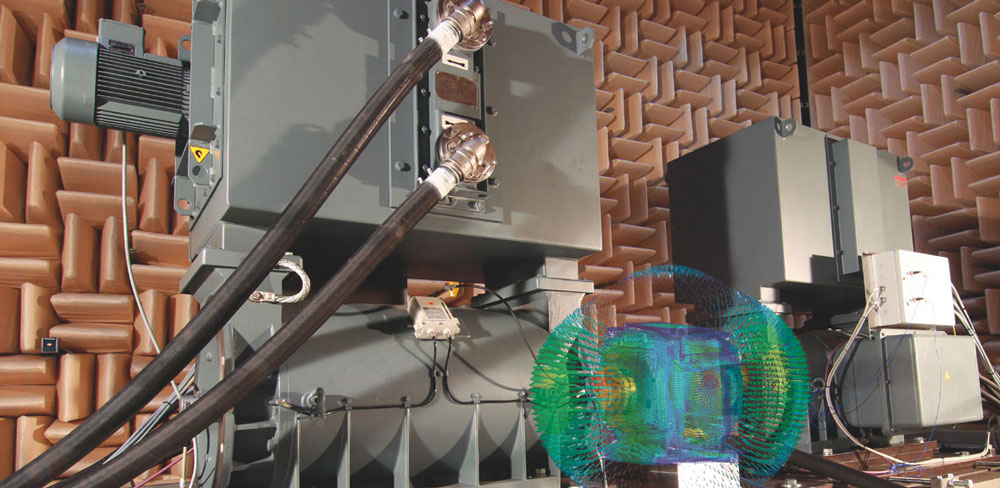The acoustic properties of drive systems and gearboxes are becoming an increasingly important quality feature. In various areas of industry and mobility, the demands for acoustic behavior and the associated reduction of noise annoyance are constantly rising.
Our research focuses on the measurement capture, simulation-based representation, and optimization of the acoustic properties of drive systems and gearboxes. In addition to the numerical and experimental investigation of complete systems, we focus on fundamental studies to describe the transmission characteristics of individual system components and excitation sources, such as tooth engagement in gear transmissions.
We employ various measurement and simulation methods to capture and represent acoustic phenomena. For the experimental analysis of the acoustic properties of gearboxes and drive systems, we have access to a semi-free field room (Class 1), a 3D laser scanning vibrometer, acoustic cameras, and a modular Brüel & Kjær measurement system with up to 200 channels. The use of these measurement analysis methods enables detailed acoustic investigations of systems and individual components, such as conducting experimental modal analyses (EMA), capturing operational vibration modes, and determining radiation-relevant surfaces based on measurement data. Furthermore, detailed analyses of the excitation behavior of gearboxes are possible, including order analyses considering gear microgeometries and waviness on the tooth flank.
The use of simulation methods allows us to evaluate the acoustic properties during the development process, optimize them if necessary, or specifically influence existing structures. For instance, excitation predictions and load distribution calculations for gearboxes are created while considering the elastic behavior of shafts, bearings, and housings, complemented by the optimization of the gear body and tooth flank microgeometry to minimize noise. Additionally, we utilize simulation models to investigate the impact of parameter variations due to manufacturing and assembly deviations or to design active systems for vibration reduction along transfer paths.
We employ modern "model updating" methods to represent the dynamic properties of vibrating systems as realistically as possible. In these methods, the model properties are specifically adjusted based on measurement investigations (e.g., EMA). This ensures that the developed simulation models accurately reflect the acoustic behavior of the real structure.
For the investigation of gearbox acoustics, a modern gearbox test bench is available. Here, both simple test and industrial gearboxes, as well as gearboxes from electric drives, can be examined regarding acoustics, efficiency, and strength.
 Fraunhofer Institute for Machine Tools and Forming Technology
Fraunhofer Institute for Machine Tools and Forming Technology